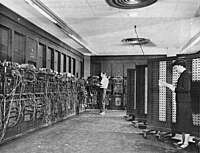History of free and open-source software

Okay kiddo, let me explain the history of free and open-source software in a way you'll understand.
A long time ago, when computers first started becoming popular, people would create software and keep it all to themselves. They didn't want to share it with others because they thought they could make a lot of money by selling it.
But then, in the 1980s, a man named Richard Stallman came along and he had a different idea. He thought that software should be free and that people should be able to share it with others. That way, everyone would have access to good software and could improve it as they saw fit.
So, Stallman started a movement called the Free Software Foundation. They created a free operating system called GNU, which stood for "GNU's Not Unix". This was the beginning of free and open-source software.
In the early 1990s, a young man named Linus Torvalds created a new operating system called Linux. He made it open-source, which meant that anyone could see the code and make changes to it. This was a big deal because it meant that groups of people could work together to improve the software.
As time went on, more and more people started using free and open-source software. Companies like Red Hat and Canonical started making money by providing support and services for open-source software.
Today, open-source software is everywhere. It's in your phone, your computer, your car, and even in space. Open-source software helps make technology more accessible and affordable for everyone.
So, that's the history of free and open-source software. It started with a man named Richard Stallman and his idea for free software, and it continues today with people all over the world working together to make great technology that anyone can use.
A long time ago, when computers first started becoming popular, people would create software and keep it all to themselves. They didn't want to share it with others because they thought they could make a lot of money by selling it.
But then, in the 1980s, a man named Richard Stallman came along and he had a different idea. He thought that software should be free and that people should be able to share it with others. That way, everyone would have access to good software and could improve it as they saw fit.
So, Stallman started a movement called the Free Software Foundation. They created a free operating system called GNU, which stood for "GNU's Not Unix". This was the beginning of free and open-source software.
In the early 1990s, a young man named Linus Torvalds created a new operating system called Linux. He made it open-source, which meant that anyone could see the code and make changes to it. This was a big deal because it meant that groups of people could work together to improve the software.
As time went on, more and more people started using free and open-source software. Companies like Red Hat and Canonical started making money by providing support and services for open-source software.
Today, open-source software is everywhere. It's in your phone, your computer, your car, and even in space. Open-source software helps make technology more accessible and affordable for everyone.
So, that's the history of free and open-source software. It started with a man named Richard Stallman and his idea for free software, and it continues today with people all over the world working together to make great technology that anyone can use.
Related topics others have asked about:
